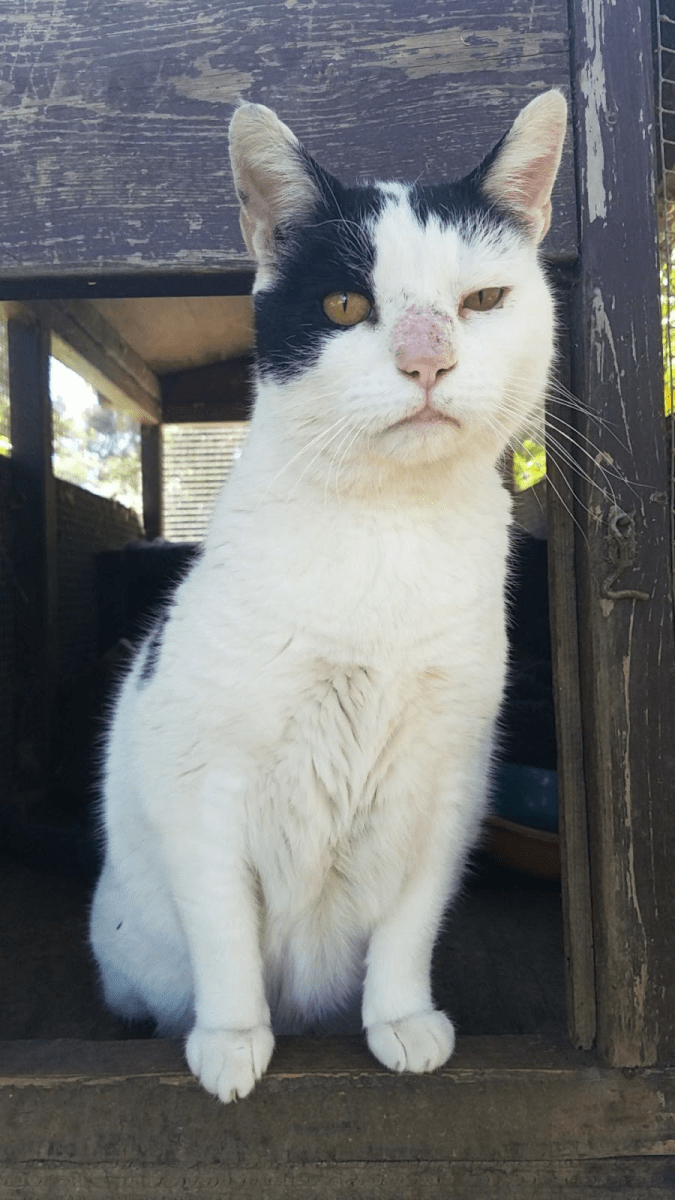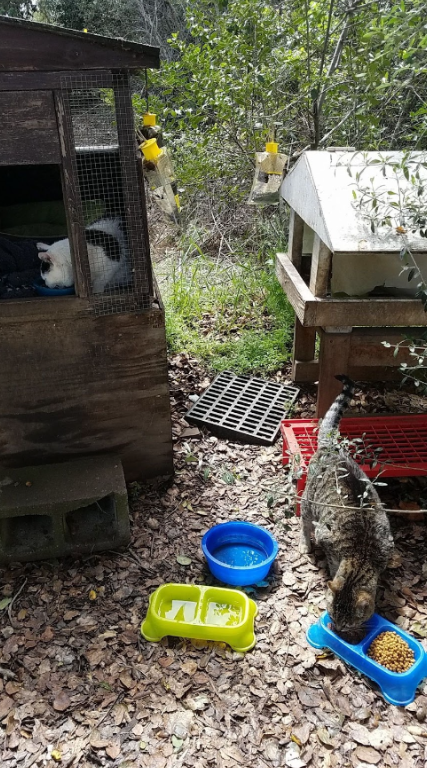Since 1987, the Feline Friends Network at Stanford has rescued hundreds of vagabond cats roaming campus. After its nearly four-decade history, the organization is now sunsetting its cat-saving operations.
According to Lisa Springs, a volunteer with the Network, the nonprofit is heading towards dissolution for a multitude of reasons. “All of our campus feeding and monitoring stations have been dismantled,” she wrote, due to reasons like increased construction and a larger coyote population which made the Network extract its feeding and monitoring stations.
In an email to The Daily, Springs and other volunteers from the Network — Kathleen Creger, Laurie Tupper and Larissa Williams — wrote that without their efforts, “many of [the cats] would likely have ended up in shelters and euthanized, or lived difficult lives without regular food or proper vet care.”

According to student volunteer Caity McGinley ‘21 M.A. ‘21, “The main opportunity for [the organization] at Stanford was putting food and water out for the cats at stations around campus.” Furthermore, she wrote that she “liked monitoring [their] health,” making sure to note if the cats were exhibiting any atypical lethargy, wounds or weight loss.
The Network never became an official University organization, maintaining its “independent, non-profit 501(c)(3)” status, the group wrote. According to the group, the Network did, however, broker an agreement with the University to install feeding stations around campus.
According to Springs, the organization experienced some attrition when its student volunteers were sent home during the Covid-19 pandemic. McGinley was among these students. She began volunteering with the Network during her freshman year, continuing until the pandemic sent her home in her junior year.
McGinley wrote that cats would pad over when she called to them, recognizing her by voice. “Sometimes they would follow me back to the dorm in Suites,” she wrote. She also wrote that seeing the cats was a highlight of her week. “[W]hen I was struggling with Duck Syndrome, they would cheer me up and to see them living their best lives always put a smile on my face,” she wrote. Regarding the organization’s decision to dissolve, McGinley mentioned she felt “saddened.”
Over the years, cats have been found in a variety of locations, ranging from a Stanford Shopping Center construction site to a drain pipe, according to the group. At one point, the Network even “trapped a mother cat and her 7 orange tabby females,” which was peculiar not only because of the large number of cats, but “because orange Tabbies are normally male” the group wrote.
Now at the tail end of its activities, the organization has four volunteers in its pack. Its staff size once peaked at 25, including student volunteers, retirees and locals who were employed elsewhere at the time, according to the group.
For the volunteers, the time commitment varied depending on their role, but it generally was around “a few hours a week,” the group wrote. For instance, some volunteers would work at the feeding stations, others would retrieve the cats and others would manage the Network’s newsletter.
The group wrote that the age of the cats varied from kittens to seniors, and that the rescue process typically followed a formula. After receiving chatter of a cat sighting, the Network would pounce, locating and trapping the cat. If the cat was tame and thereby considered adoptable, they would check if it had a microchip so the owner could be found. “If there is no microchip we try to find the owner by posting on websites and putting signs around the neighborhood where it was found,” the group wrote.
Adoptable cats would be sent to “a foster home while awaiting their ‘forever’ home” if no owner came forward, the group wrote. New owners tended to be from the Bay Area, although some “[came] from as far away as the Santa Cruz Mountains and Half Moon Bay.” The Network would do a background check on prospective homes before letting a cat get adopted.
On the other hand, feral cats were considered “unsocialized” or “unadoptable,” according to the group. The group would still take the cat to a veterinarian to check for microchips and any other health care, but the cat would receive the standard “TNR,” or “Trap-Neuter-Return.” After treatment, these cats were “returned to campus” to remain under the Network’s supervision and feeding.
Some students were surprised to hear of the Network’s former presence on campus yet appreciative of its legacy of rescuing homeless cats.
Hannah Cussen ’23 said she would have loved to become a volunteer with Network if she had known of its existence. “Cat people tend to be introverted and it would have been fun to meet other people through a shared love of cats,” Cussen said.
“I didn’t realize there would be that many cats on campus to have a whole organization dedicated to saving them,” Alyssa Charley ’23 said. “My own fat cat at home was a stray, so it’s nice to know there are efforts to save strays here too.”
In an email to The Daily, a Network volunteer Larissa Williams wrote that the Network “did not make the decision [to disband] lightly or without planning.”
According to Williams, the Network is still active as it is phasing out and there are numerous organizations doing similar work nearby. Before making the decision to dissolve, the Network “carefully monitored the locations on site for a year,” she wrote.
Williams added that “the spay neuter program works incredibly well with 26 years of dedicated effort,” leading to a reduction of the campus cat population from “over 100” to “zero residential feral cats” today.
